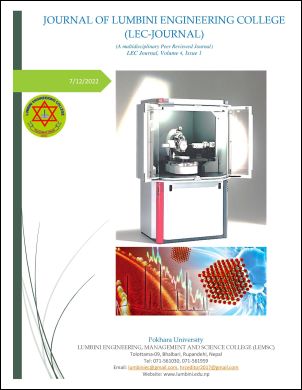Pneumonia of Chest X-Ray Images Detection using VGG Architectures
DOI:
https://doi.org/10.3126/lecj.v4i1.49365Keywords:
Pneumonia, Chest X-rays, fine-tuning, VGG, pre-trained model, extract featuresAbstract
Pneumonia is one of the world's most frequent diseases. Pneumonia, a serious respiratory infection, damages the lungs and makes it difficult to breathe. Chest X-ray scans are one of the most significant and common procedures for diagnosing pneumonia condition. An effective model for the identification of pneumonia based on digital chest X-ray pictures is proposed in this paper, which could help radiologists make better decisions. This is a supervised learning technique in which the proposed model predicts the outcome depending on the dataset's image quality. In this research, Kaggle dataset has been used to train the model. To improve training and validation accuracy, fine-tuning of Visual Geometry Group (VGG) pre-trained model are conducted with different hyperparameters. The deep Convolutional Neural Networks (CNNs) based VGG-16 and VGG-19 architectures are used to extract features from given chest X-ray images. These features are then used for classification. In addition to the accuracy and F1-score as an evaluation matrix, the results of pre-trained models are compared using the model loss, and model accuracy graphs. The model's performance in detecting pneumonia demonstrates that the proposed VGG pre-trained model can efficiently categorize normal and pneumonia chest X-rays images in practice. As a result, the proposed model can be utilized to make a speedy diagnosis of pneumonia and can assist radiologists with their work.
Downloads
Downloads
Published
How to Cite
Issue
Section
License
Copyright (c) 2022 LEC Pokhara University

This work is licensed under a Creative Commons Attribution-NonCommercial 4.0 International License.
This license allows reusers to distribute, remix, adapt, and build upon the material in any medium or format for non-commercial purposes only, and only so long as attribution is given to the creator.




